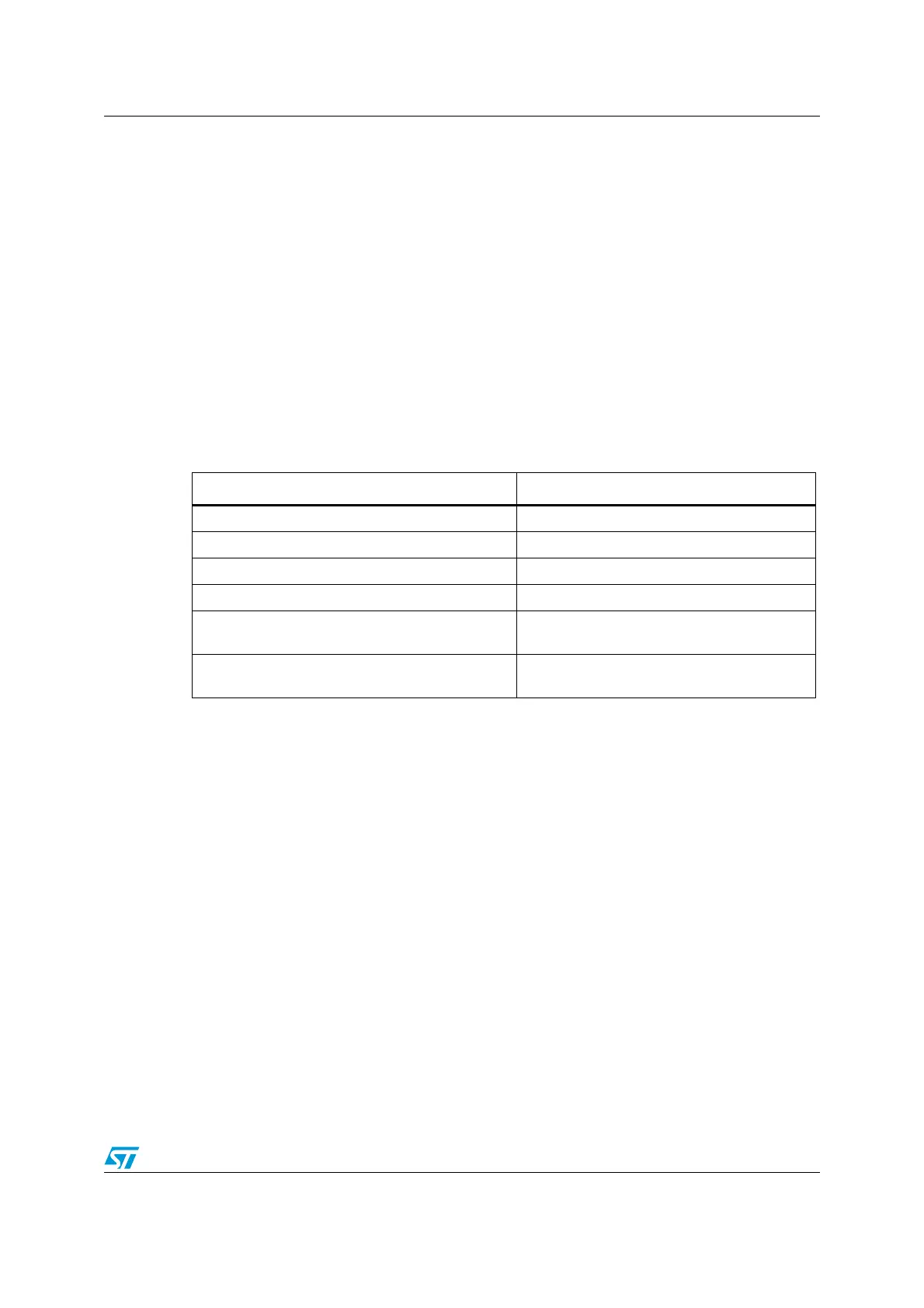RM0008 Inter-integrated circuit (I
2
C) interface
591/690
The System Management Bus Specification refers to three types of devices. A slave is a
device that is receiving or responding to a command. A master is a device that issues
commands, generates the clocks, and terminates the transfer. A host is a specialized master
that provides the main interface to the system's CPU. A host must be a master-slave and
must support the SMBus host notify protocol. Only one host is allowed in a system.
Similarities between SMBus and I
2
C
● 2 wire bus protocol (1 Clk, 1 Data) + SMBus Alert line optional
● Master-slave communication, Master provides clock
● Multi master capability
● SMBus data format similar to I
2
C 7-bit addressing format (Figure 230).
Differences between SMBus and I
2
C
The following table describes the differences between SMBus and I
2
C.
SMBus application usage
With System Management Bus, a device can provide manufacturer information, tell the
system what its model/part number is, save its state for a suspend event, report different
types of errors, accept control parameters, and return its status. SMBus provides a control
bus for system and power management related tasks.
Device identification
Any device that exists on the System Management Bus as a slave has a unique address
called the Slave Address. For the list of reserved slave addresses, refer to the SMBus
specification ver. 2.0 (http://smbus.org/specs/).
Bus protocols
The SMBus specification supports up to 9 bus protocols. For more details of these protocols
and SMBus address types, refer to SMBus specification ver. 2.0 (http://smbus.org/specs/).
These protocols should be implemented by the user software.
Table 149. SMBus vs. I
2
C
SMBus I
2
C
Max. speed 100 kHz Max. speed 400 kHz
Min. clock speed 10 kHz No minimum clock speed
35 ms clock low timeout No timeout
Logic levels are fixed Logic levels are VDD dependent
Different address types (reserved, dynamic etc.)
7-bit, 10-bit and general call slave address
types
Different bus protocols (quick command, process
call etc.)
No bus protocols

